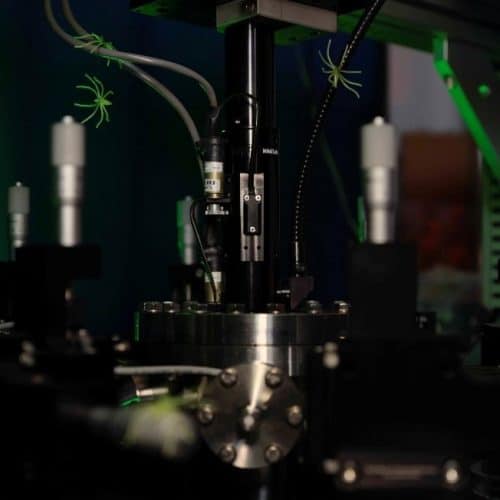Inspired by spiderweb design, the microchip sensor combines nanotechnology and machine learning for studying gravity waves amongst others

Inspired by the intricate nature of a spiderweb, a team of researchers from TU Delft has designed one of the world’s most precise microchip sensors by combining nanotechnology and machine learning.
The nanomechanical sensor can function at room temperature in extreme isolation from everyday noise. This new device has applications for studying gravity and dark matter, as well as, quantum internet, navigation and sensing.
Idea for innovation
Spiderweb seems to be an interesting source of inspiration. But according to Dr Richard Norte, researcher at TU Delft, states, the curiosity came across at an unusual time.
“During the lockdown, I noticed a lot of spiderwebs on my terrace. I realised spiderwebs are really good vibration detectors, in that they want to measure vibrations inside the web to find their prey, but not outside of it, like wind through a tree. So why not hitchhike on millions of years of evolution and use a spiderweb as an initial model for an ultra-sensitive device?” he said.

Assisting in this process was machine learning, which helped in the understanding of spiderwebs complexities.
“We knew that the experiments and simulations were costly and time-consuming, so with my group we decided to use an algorithm called Bayesian optimisation, to find a good design using few attempts,” said Dr Miguel Bessa, co-researcher at TU Delft.
Dongil Shin, co-first author in this work, then implemented a computer model and applied the machine learning algorithm to find the new device design.
Machine learning to rescue
From nearly 150 different spiderweb designs, the algorithm proposed a spiderweb that consisted of only six strings put together in a deceivingly simple way.
“The computer simulations showed that this device could work at room temperature, in which atoms vibrate a lot, but still have an incredibly low amount of energy leaking in from the environment – a higher Quality factor in other words,” said Dr Miguel Bessa.
“With machine learning and optimisation, we managed to adapt the spider web concept towards this much better quality factor.”
Based on this new design, an ultra-thin, microchip sensor with a nanometre-thick film of a ceramic material called Silicon Nitride was built.
On testing the model by subjecting it to isolated vibrations and measuring the time for them to stop, the result showcased the sensor’s handling ability at record-breaking vibration conditions under room temperature.

“We found almost no energy loss outside of our microchip web; the vibrations move in a circle on the inside and don’t touch the outside. This is somewhat like giving someone a single push on a swing, and having them swing on for nearly a century without stopping,” said Dr Richard Norte.
Overcoming an underlying obstacle
One of the biggest challenges for studying vibrating objects at nanoscale is to keep ambient thermal noise from interacting with their fragile states.
Quantum hardware generally requires a storage temperature of near absolute zero (−273.15°C), for which a refrigerator costs millions of dollars.
But the researchers removed the need for such by creating a web-shaped microchip sensor that resonates extremely well in isolation from room temperature noise.
What this invention holds
With this spiderweb-based sensor, the researchers have laid down a path for interdisciplinary science & technology breakthroughs that combines bio-inspired designs, machine learning and nanotechnology.
This novel paradigm has amazing implications for quantum internet, sensing, microchip technologies and fundamental physics and helps to explore ‘difficult to measure’ forces related to gravity or dark matter.
Among other applications, the discovery and development of quantum devices will become much more affordable.






